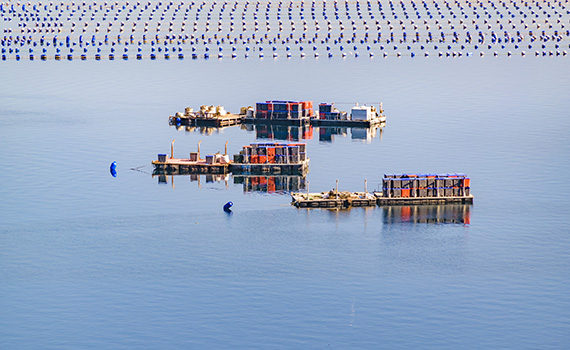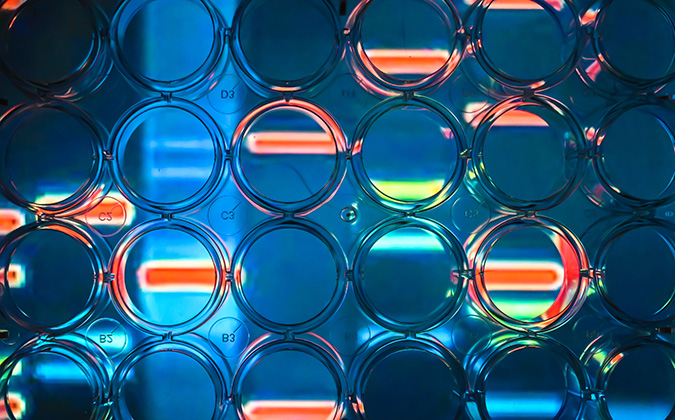
Disease outbreaks in open aquaculture systems highlight benefits of collaboration
Disease is a shared problem for those farming fish in the open sea, say industry experts — and the results of better collaboration are plain to see.
“The communal sharing of water is difficult to control for entry of pathogens, so in these open-net pen systems, not only do farms share water, but they also share with all the wild fish and get the pollutants from coastal communities — so the environment may not be always the best and the fish may be stressed because of that,” said Sophie St. Hilaire, PhD, an epidemiologist from City University of Hong Kong, speaking at the Economist Impact World Ocean Summit – Asia Pacific.
An uncomfortable proximity?
Large numbers of fish in one geographic area make major disease outbreaks more likely to occur, she suggested, as farms that are close together “share pathogens.”
“What we’ve seen in some areas is you’ve got different farmers farming asynchronously, with different species even. Sometimes we have a lack of communication between farmers that share communal waters, which can basically ‘ping pong’ pathogens, so that has been problematic and quite hard to resolve,” she said.
Andreas von Scholten, chief executive, Barramundi Group, shared St. Hilaire’s views.
“It’s extremely important that you are mindful about where you put your farms. [You need] places where you have adequate depths, adequate currents and as little as possible exposure to outside influences,” he said.
Disease fight in Chile set benchmarks
Among notable disease outbreaks in recent years, infectious salmon anemia (ISA) in Chilean salmon production was one of the most severe. The crisis prompted the industry to focus its efforts, with significant results. Vaccines were developed against ISA, helping the Chilean industry recover.
“I think in these crises, that’s when you really see the true impact of the researchers from the various companies working within fish and shrimp health,” von Scholten continued.
“In the case of the ISA crisis, that was an example of how an industry could very quickly gather around a problem, innovate, develop a vaccine — not too dissimilar to the COVID situation.”
Following the peak of ISA in Chile around 2008, the industry moved to take collaboration further.
“[ISA] actually brought them together and made them reflect on their biosecurity and how to deal with managing an open system. A lot of practices that have been actually used now for almost a decade were implemented because of that crisis. For example, their zoning systems, their synchronized fallowing and synchronization of sea lice treatments,” St. Hilaire explained.
“It did help the industry grow, and I think it also made them a little bit more aware of pathogen transmission.”
New technologies can stem tide of infections
“We really need a coalition of the willing, across farmers, technology suppliers, genetics and vaccines,” said Kristin Veriga of Grobest, highlighting the need to use more technologies to help predict and manage disease outbreaks. These include new analytics systems using satellite imaging linked to artificial intelligence.
He noted the example of where monitoring signs suggesting early harvests, which are often linked to disease outbreaks, can lead to quick communication of a possible problem to producers. If farmers get a warning about disease in their area within 2 or 3 days of signs appearing, he continued, this would allow them to take precautions that could make a significant difference to the productivity in the yields of those farms.
“It’s certainly in its infancy, but we have got tests underway, and we’re starting to see some interesting data,” he said.
Moving toward ‘one big farm’ approach
Data-sharing is now standard in the major salmon-producing nations, St. Hilaire explained.
“In the salmon industry, they will report diseases and they’ll report lice counts, because lice can get out of hand if they’re not on top of it. So that data is usually shared among the farmers. If you have some early warning, you can be prepared and do an earlier treatment or synchronize treatment so you don’t have to treat as much. It’s basically one big farm these days.”
Aquaculture can expect more creative uses of data over the coming years. Already available are some predictive tools for ISA, as well as sea lice, which can project where problems are likely to be, given a certain status of infection in a bay or a larger area.
“These are a little bit more experimental and research-based, but they could be used by the industry if they had a problem,” she added.






